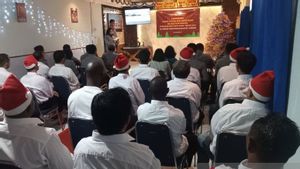Japan's new medium-speed rocket failed on its space flight on Tuesday 7 March after the launcher's second phase engine did not turn on as planned. This is a blow to the country's space agency in a blow to its efforts to cut the cost of access to space and compete against Elon Musk's SpaceX.
The 57-meter (187-foot) H3 rocket took off without a problem from the Tanegashima spaceport, and was broadcast live by the Japan Space Exploration Agency (JAXA).
However, after reaching space, the second phase of the rocket's engine failed to turn on, forcing mission officials to manually destroy the vehicle.
Live stream of #H3/ALOS-3 launch will start around 9:40 a.m. (JST) / 0:40 a.m. (UTC) on Mar 7.#JAXAhttps://t.co/OdWKKbmVxz
— JAXA(Japan Aerospace Exploration Agency) (@JAXA_en) March 5, 2023
"The rocket disposal is a decision taken because the rocket cannot complete its mission," said launch broadcast commentator from JAXA, quoted by Reuters. "So, what happened? This is something we have to look into all the data."
This failed attempt follows the cancellation of last month's launch. "Unlike previous cancellations and delays, this time it was a total failure," said Hirotaka Watanabe, a professor at Osaka University with expertise in space policy.
"This will have a serious impact on Japan's future space policy, space business, and technological competitiveness," he added.
Japan's new rocket in the past three decades has brought satellite observations of the ALOS-3 disaster, which is also equipped with an experimental infrared sensor designed to detect North Korea's ballistic missile launch.
H3 developer Mitsubishi Heavy Industries Ltd (MHI) said it was confirming the situation around the rocket with JAXA and had no immediate comment.
MHI estimates that the launch cost of H3 will be half of its predecessor, H-II, helping it win its business in the increasingly dominated global launch market by SpaceX's reusable Falcon 9 rocket.
A company spokesman said earlier that they also relied on Japan's previous rocket reliability to get business.
In a report published in September, the Center for Strategic and International Studies put Falcon 9 launch costs into low-Earth orbit of US$2,600 per kilogram. The equivalent tag price for H-II is US$10,500.
Powered by a simpler and cheaper new engine, which includes 3D printed parts, the H3 is designed to transport government and commercial satellites into Earth orbit and will carry supplies to the International Space Station.
For decades, Japan has launched several rockets into space. From 1970 to the present, Japan has launched more than 70 rockets, with a success rate of about 96%. However, failures in rocket launches have also occurred several times, including failures in the launch of the H3 rocket on March 1, 2022 and finally, March 6, 2023.
The English, Chinese, Japanese, Arabic, and French versions are automatically generated by the AI. So there may still be inaccuracies in translating, please always see Indonesian as our main language. (system supported by DigitalSiber.id)












